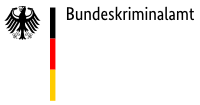
The BKA’s writing collection contains over 40,000 documents and over 20,000 sets of personal data. Documents which are subject to examination are sent to the KTI via the police reporting service in order to be able to establish or exclude investigative associations.
 The general and special writing characteristics typical for the writer are documented with the aid of computers and compared with several thousand other handwritten samples stored.
The general and special writing characteristics typical for the writer are documented with the aid of computers and compared with several thousand other handwritten samples stored.
The central tool of the Handwriting Identification Service is the Forensic Information System: Handwriting (FISH). This world-wide unique expert system, developed by the BKA, is increasingly under demand and also used by foreign police departments.
For comparison with the BKA’s writing collection, the document which is subject to examination is scanned into a computer, where, in a pre-processing stage, the digital image is reduced to the basic handwritten information. Interfering parts of the image, such as printing, background patterns, soiling and lines can be removed semi-automatically.
An initial feature extraction takes place in a fully automatic calculation of the distribution of the script in a selected typical section of the image, independent of content, language or type of writing. In a second stage, individual informative letters are isolated and compared in form and line progression with letters already stored. Finally the heights, widths, offsets, angles and loop forms of the script components are measured interactively.
 Numerous specific features to be found in the individual handwriting can lead to the identification of the writer. Here, by way of example, the lower case character “s”
Numerous specific features to be found in the individual handwriting can lead to the identification of the writer. Here, by way of example, the lower case character “s”
Particulars with regard to the writing system, the type of writing, and as yet undocumented writing characteristics, in addition to particulars regarding the type or time of the crime, are taken to specify the search in the collection. Hit-lists are displayed in the search results, in which the contents of the collection are sorted in rank order according to their similarity with the writing sample examined. After inspection of the stored reference images on the screen, it is decided which original documents need to be called up for the purposes of a subsequent comparative writing examination. Only then is it certain whether or not the writer sought is already known to the BKA.
